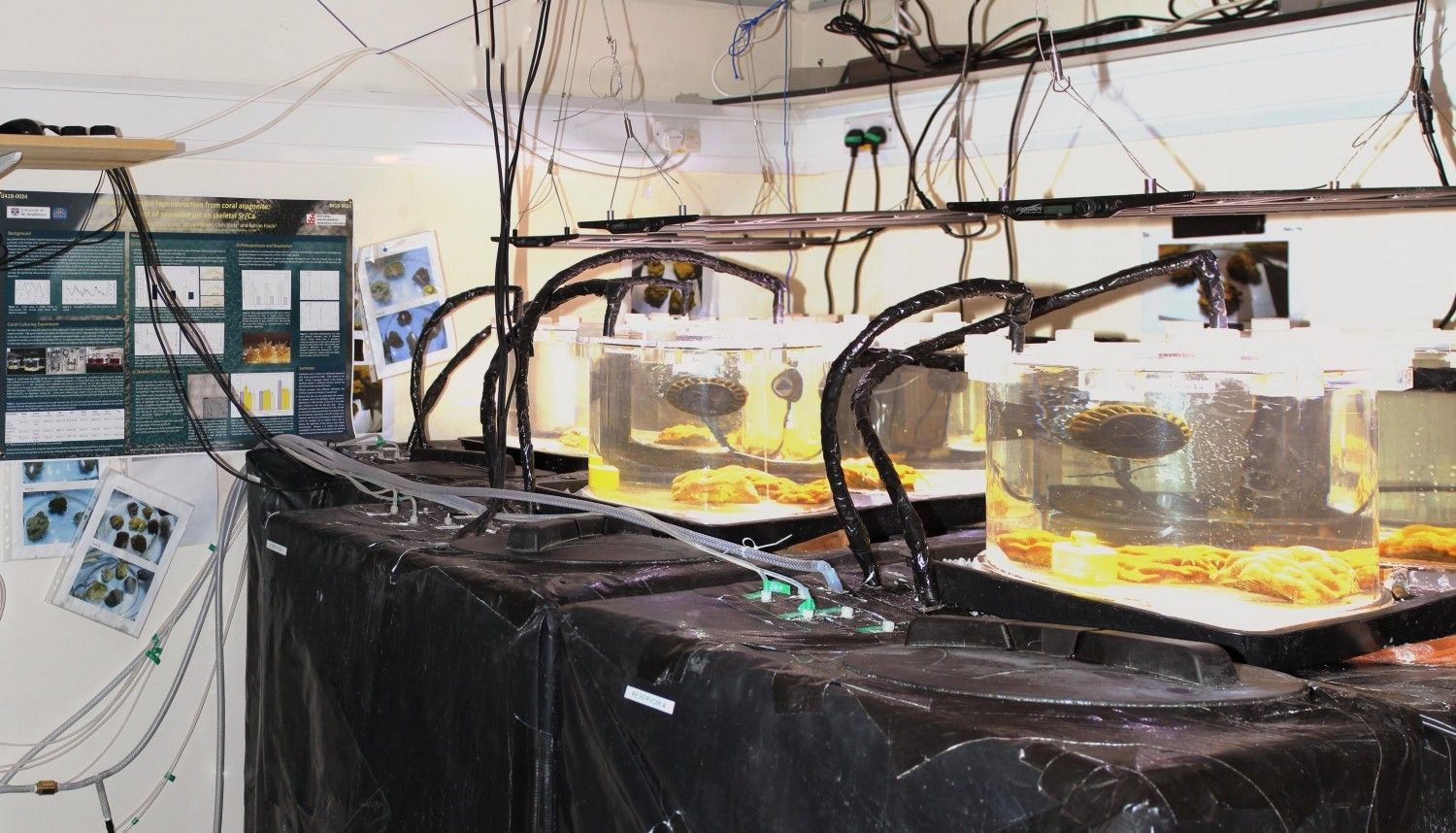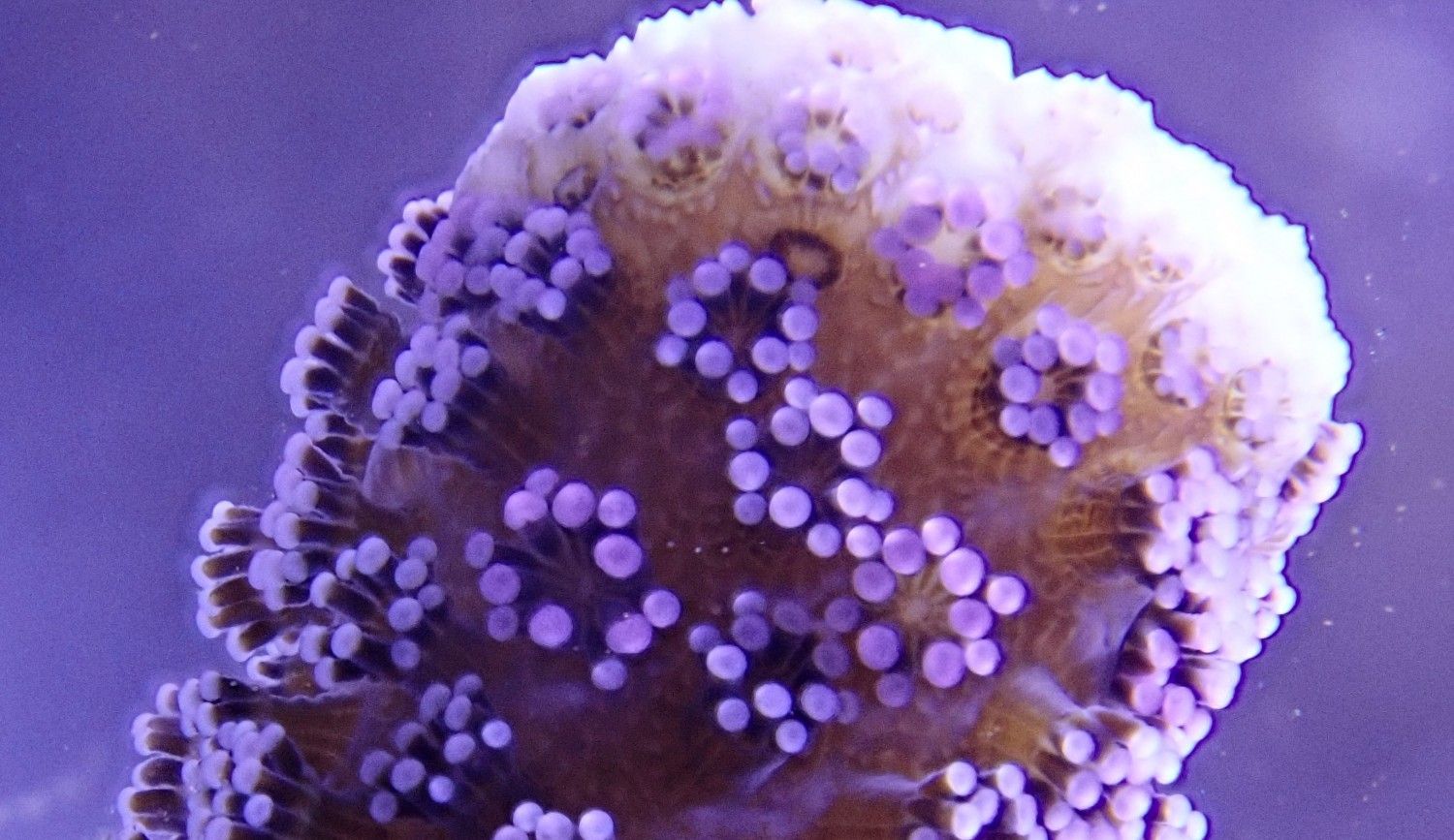University of St Andrews
A little piece of the tropics in St Andrews

By Dr Nicola Allison, Senior Lecturer at School of Earth & Environmental Sciences, University of St Andrews.
I’ve arrived at work on a bitterly cold morning but as I descend the stairs to the building basement I’m enveloped by warm air and bright light. This is the University of St. Andrews coral lab and it provides a balmy refuge to the cold outside. I study tropical corals and maintain a series of marine aquaria to investigate how various factors in the geological past and the future will affect coral biomineralistion, the process by which corals produce reefs. I pause after entering the lab and listen to the routine sounds of the equipment whirring and clicking to reassure myself that all is well on the St. Andrews reef.
Corals are some of the simplest organisms, consisting of polyps made up of a stomach with one entrance surrounded by a ring of tentacles. Although each polyp is a single small animal, typically millimetres to centimetres in diameter, most corals live as colonies made up of thousands of individuals. The base of the polyp deposits a mineral skeleton and collectively these form coral reefs, the underwater structures which support some of the most diverse ecosystems on the planet. Coral reefs can be breath taking. The living coral can be brightly coloured and the entire structures can be huge – the Australian Great Barrier Reef is some 2500 km in length and covers about 350,000 km2.
Up to one billion people rely on coral reefs for food or for income from fishing while, for others, the reef structures act as natural breakwaters providing protection from waves generated by storms.
Although corals are simple organisms it is not fully understood how they produce skeletons. At St. Andrews we have pioneered an approach to help us to understand the biomineralisation process. The coral skeleton forms in a minute space, called the calcification site, between the base of the coral polyp and the underlying skeleton. This space is filled with a fluid, derived from seawater, but modified by the coral. In particular the coral increases the pH of the fluid (so it becomes less acid) and this promotes the formation of the skeleton. In our technique we use the chemistry of the coral skeleton to reconstruct the pH and carbon chemistry of the coral calcification fluid, two key factors which control the likelihood of skeleton production. These insights into coral calcification help us to understand how corals may respond to future environmental change.

Rising atmospheric CO2 is causing ocean warming and has fundamentally affected seawater carbonate chemistry, lowering seawater pH (ocean acidification). To explore how ocean acidification affects coral calcification we spent 2 years growing coral in our aquaria under different CO2 atmospheres. To identify the skeleton deposited under different conditions we incubated the corals in a seawater labelled with dye for short periods. The dye is deposited in the skeleton creating a time horizon. Analysis of the coral skeletons indicated that calcification fluid pH is fundamental in concentrating inorganic carbon at the coral calcification site. At high calcification site pH, carbon dioxide from the overlying respiring coral tissue readily diffuses into the calcification site, increasing the total inorganic carbon available to build the calcium carbonate skeleton. Corals with high fluid pH had high concentrations of inorganic carbon and almost always had rapid rates of skeleton deposition. In contrast, corals with a low calcification site pH had lower fluid inorganic carbon and lower deposition rates. Corals cultured under the high CO2 atmospheres of the future had lower calcification site pH than their analogues cultured at present day CO2 and concentrated less inorganic carbon explaining why they ultimately produced less skeleton.
Reducing the rates at which corals build their skeletons has worrying implications for the future success of reefs. Coral reefs are continually eroded by the impacts of storm and by organisms which bore into and inhabit the reef structures. Calcification rates must be sufficiently rapid to offset these losses. On a more positive note, these advances in our understanding of the coral calcification process leave us better placed to investigate how some corals are able to tolerate ocean acidification and to consider how to best promote coral growth.
With thanks to Nicky Allison, Cathy Cole and Sarah Cryer.
Create an event with world changing ideas: businessevents.visitscotland.com | legends@visitscotland.com